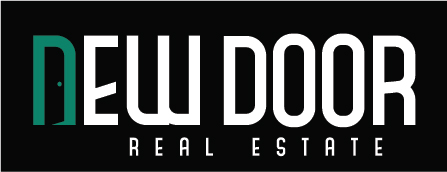The Rise of Micro-Insurance and How to Market It Effectively
Micro-insurance has emerged as a powerful solution to provide financial protection to low-income individuals who often cannot afford traditional insurance. It focuses on delivering affordable, accessible, and simple insurance products to underserved populations. As the demand for micro-insurance grows, insurance providers and marketers need effective strategies to reach these potential customers. In this blog, we will explore the rise of micro-insurance and share practical tips for marketing it effectively.
What is Micro-Insurance?
Micro-insurance is a type of insurance product designed specifically for low-income individuals or communities. It typically covers specific risks such as health issues, accidents, agricultural losses, or natural disasters. The premiums are low, and the coverage is tailored to the needs of people who may not have access to traditional insurance products.
Key Features of Micro-Insurance
- Affordable Premiums: Designed to be budget-friendly for low-income groups.
- Simple Policies: Easy-to-understand terms and conditions.
- Quick Claims: Streamlined processes for faster claim settlements.
- Customized Coverage: Focused on the unique needs of the target audience, such as health, crop, or life insurance.
Why is Micro-Insurance on the Rise?
Several factors have contributed to the growth of micro-insurance:
- Increased Awareness
Governments, NGOs, and financial institutions are working to raise awareness about the importance of financial security. This has led to higher demand for micro-insurance products.
- Technological Advancements
Technology, especially mobile phones and online platforms, has made it easier to distribute and manage micro-insurance products, even in remote areas.
- Supportive Regulations
Regulatory bodies have introduced frameworks that encourage the development and distribution of micro-insurance. Obtaining an insurance agent license, insurance company registration, or insurance web aggregator license is now more streamlined, allowing businesses to enter this market.
- Rising Risks for Low-Income Groups
Climate change, health crises, and economic uncertainties have made low-income populations more vulnerable, increasing the need for affordable insurance solutions.
How to Market Micro-Insurance Effectively
Marketing micro-insurance requires a customer-centric approach. Here are some strategies to consider:
- Understand Your Target Audience
Identify the unique needs of your target market. Are they farmers needing crop insurance? Workers seeking health coverage? Conduct surveys or engage with local communities to gather insights. This information can guide your product design and marketing strategy.
- Simplify Communication
Use simple and relatable language to explain your products. Avoid technical jargon that might confuse potential customers. Visual aids like videos, infographics, and animations can make complex ideas more accessible.
- Leverage Local Networks
Partner with local organizations, cooperatives, and community leaders who have established trust within the community. These partnerships can help you promote your products effectively.
- Utilize Technology
- Develop mobile apps or websites to provide easy access to your products.
- Consider applying for an insurance web aggregator license to create a platform where customers can compare and purchase micro-insurance policies online.
- Use SMS and WhatsApp campaigns to communicate with customers in their preferred language.
- Educate and Build Trust
Many potential customers are unfamiliar with how insurance works. Offer free workshops, webinars, or informational brochures to educate them about the benefits of micro-insurance. Transparent communication builds trust, which is crucial for customer retention.
- Create Tailored Marketing Campaigns
Highlight how your product addresses specific challenges faced by your audience. For example, if you are targeting farmers, focus on how your crop insurance can safeguard their income during natural disasters.
- Provide Flexible Payment Options
Offer multiple payment options like monthly premiums, mobile payments, or cash payments through local agents. Flexibility can make your products more accessible.
- Focus on Customer Service
Ensure your claims process is simple and quick. A positive customer experience can lead to word-of-mouth referrals, a powerful tool in underserved markets.
- Invest in Digital Marketing
Use digital platforms to reach a broader audience. Social media, email marketing, and search engine optimization (SEO) can help you connect with tech-savvy individuals looking for insurance solutions.
- Ensure Compliance
Obtain the necessary licenses, such as an insurance agent license or insurance company registration, to operate legally and gain customer trust. Compliance with regulations also ensures long-term sustainability.
Case Study: Successful Micro-Insurance Marketing
Consider the example of a micro-insurance provider targeting rural farmers. By partnering with local agricultural cooperatives, the company was able to:
- Conduct workshops on crop insurance benefits.
- Distribute simple brochures in local languages.
- Use mobile technology for policy enrollment and premium collection.
This approach resulted in high customer engagement and a steady increase in policy sales.
Challenges in Marketing Micro-Insurance
While the potential is significant, there are challenges:
- Low Awareness: Many people are unaware of insurance and its benefits.
- Infrastructure Issues: Reaching remote areas can be difficult.
- Cultural Barriers: Mistrust in financial products can hinder adoption.
- Regulatory Hurdles: Navigating the requirements for licenses like an insurance marketing firm registration can be complex.
Overcoming Challenges
To address these challenges:
- Invest in community engagement and education.
- Use technology to bridge geographical gaps.
- Work closely with regulatory bodies to streamline the licensing process.
Conclusion
The rise of micro-insurance represents a significant opportunity to bring financial security to underserved populations. By understanding your audience, simplifying communication, leveraging technology, and ensuring regulatory compliance through licenses such as an insurance web aggregator license or insurance company registration, you can market micro-insurance effectively.
As more businesses and organizations enter this space, the focus must remain on creating value-driven, customer-centric solutions. With the right marketing strategies, micro-insurance can empower millions while building a profitable and sustainable business model.
Source: https://evere.co/businesses/rise-micro-insurance-and-how-market-it-effectively




